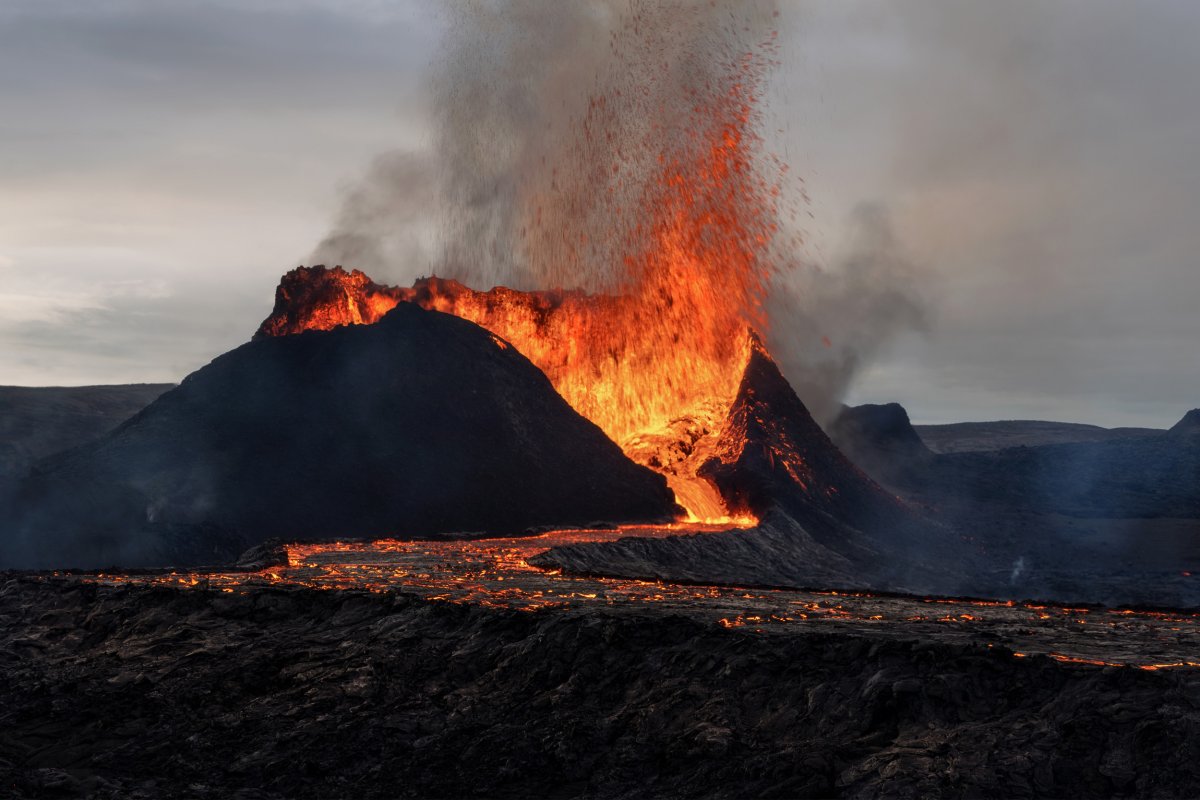The gas plume from the most recent Iceland volcano eruptions has been mapped as it moves towards Europe.
The eruption, which began at the Fagradalsfjall volcano along the Reykjanes peninsula on 17 March, started with huge amounts of sulfur being emitted into the atmosphere, as well as a flow of lava pouring from its crater. It is the biggest eruption the volcano has seen in the last four months, during which there has seen an uptick in activity.
Volcanoes produce sulfur when magma rises to its surface. This causes a decrease of pressure meaning dissolved sulfur dioxide (SO2) seeps from the molten rock.

The sulfur dioxide plume has now traveled all the way to Ireland and the United Kingdom, the Copernicus Atmosphere Monitoring Service (CAMS) global system reported. It is now headed for other parts of northern Europe.
The service has predicted that it will pass over Scandinavia before reaching the Baltic states. So far forecasts predict it could reach Russia, Poland and the Baltics by Friday.
The service tracked the SO2 amounts by monitoring information from satellites.
"The previous eruptions didn't produce much in terms of SO2 emissions which could be observed and assimilated in our system," Mark Parrington, senior scientist at CAMS said in a summary.
"The amount of SO2 emitted this time has been very clear in the observations and we are closely monitoring the plume as it is transported over northern Europe. In our system we currently assume an initial injection of SO2 at 500 hPa, an altitude of about 5 kilometers (3.1 miles). The plume has been observed up to 4 kilometers which means that the forecast transport is fairly reliable."
Sulfur can have a range of adverse health effects if there is a high amount in the air. Although this plume does not seem to be causing serious worry, scientists are keeping a close eye on it.
"Volcanic eruptions and releases of large amount of sulfur compounds can affect not only the air quality in the region directly affected, but also global processes, such as the concentration of ozone in the stratosphere," CAMS director Laurence Rouil said in a press release.
"The impacts of the volcanic eruptions in Iceland in the atmosphere have not yet been so severe, but it is relevant to keep monitoring the evolution of the situation."
CAMS is able to track sulfur dioxide in near real time as it moves through the atmosphere.
The nearby town of Grindavik has been evacuated due to the increase in volcanic activity, and a state of emergency has been declared. Lava flows have not reached the town, according to the Icelandic Met Office, but eruptions can be unpredictable and officials are taking all the precautions they can.
Iceland is no stranger to this kind of volcanic activity, as it is one of the most seismically active countries in the world. The island lies on the Mid-Atlantic Ridge, where the Eurasian and North American tectonic plates regularly shift.
Do you have a tip on a science story that Newsweek should be covering? Do you have a question about volcanoes? Let us know via science@newsweek.com.
Uncommon Knowledge
Newsweek is committed to challenging conventional wisdom and finding connections in the search for common ground.
Newsweek is committed to challenging conventional wisdom and finding connections in the search for common ground.
About the writer
Robyn White is a Newsweek Nature Reporter based in London, UK. Her focus is reporting on wildlife, science and the ... Read more
To read how Newsweek uses AI as a newsroom tool, Click here.








